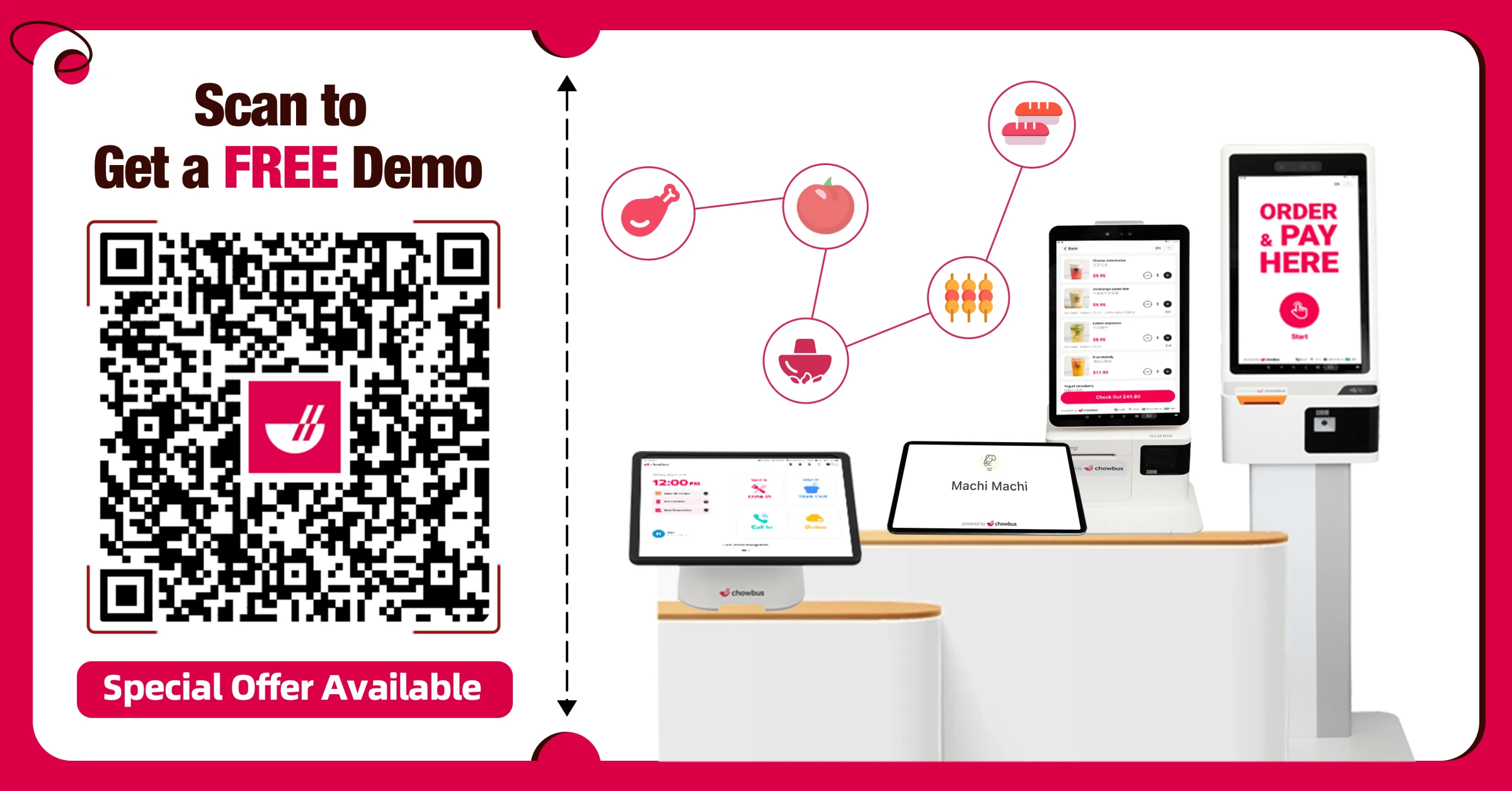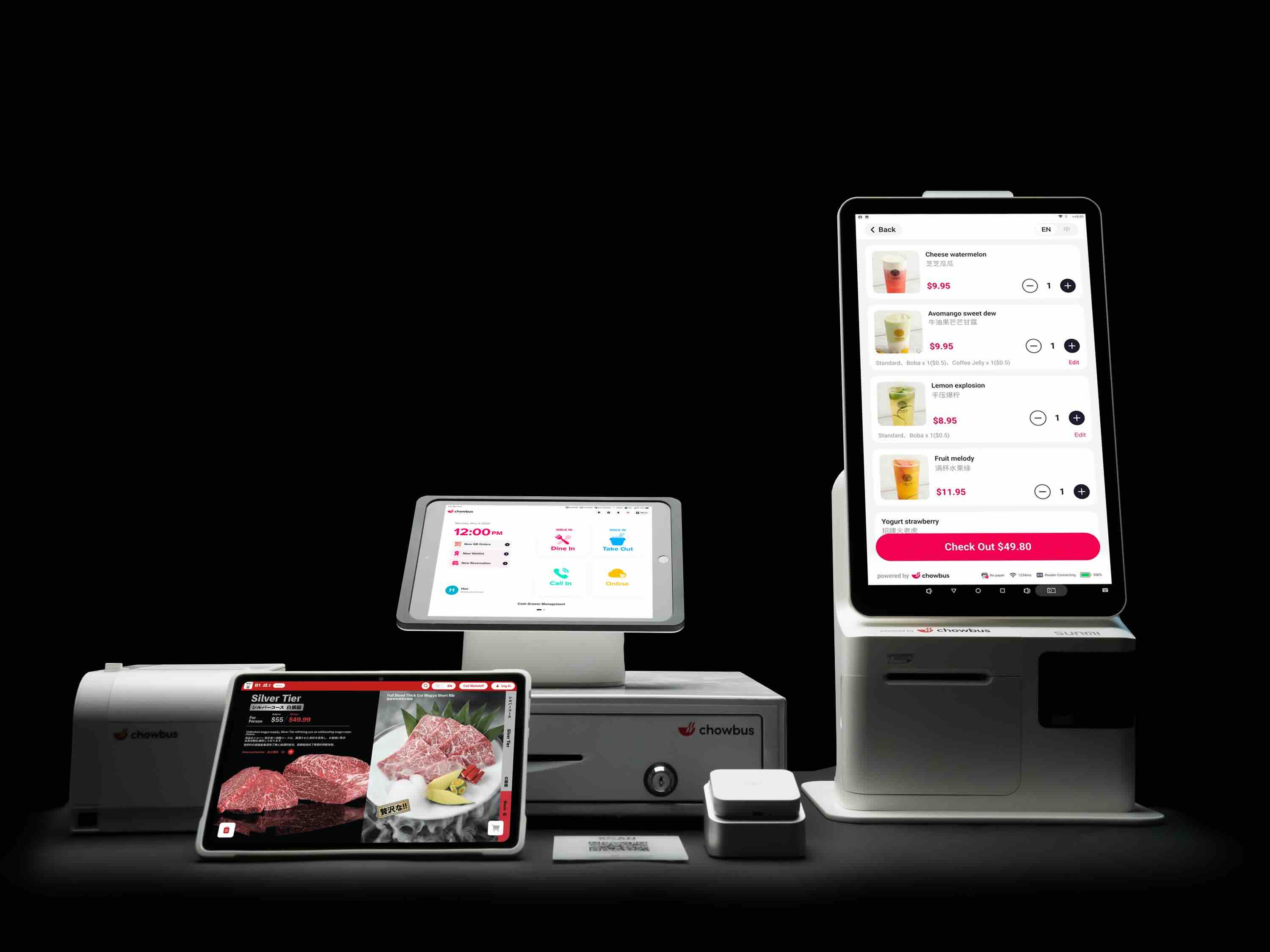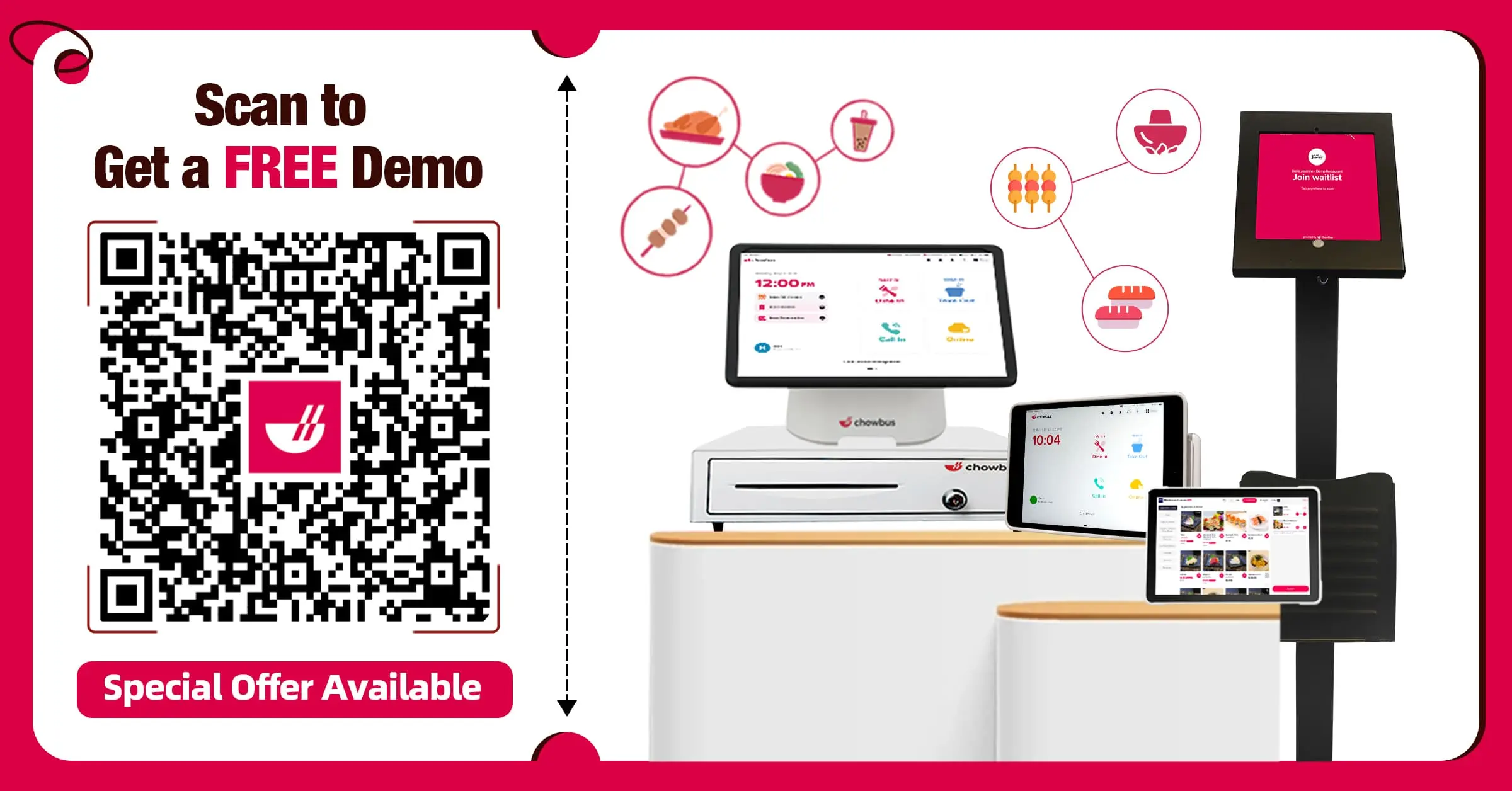How to Scale a Restaurant Business: Grow With 8 Simple Tips!

Expanding your restaurant isn’t just about adding more tables or opening a new location. It’s about strategically growing your business to meet demand and increase profitability. Whether you’re considering adding square footage at your current location, venturing into new markets with additional outlets, or enhancing operational efficiencies, understanding how to scale effectively is key.
This guide will walk you through each step of the process, from assessing your current operations to deploying the right strategies for sustainable expansion. Ready to transform your thriving local eatery into a flourishing food empire? Here’s how to scale your restaurant business efficiently and effectively.

How to Scale a Restaurant Business
Strategic planning and precise execution are essential when you're looking to expand your restaurant business. Here's a step-by-step guide to navigate through this process:
1. Assess Your Current Position
Before you expand, examine your restaurant’s current state closely. This initial step is vital for setting the stage for successful growth.
Conduct an Operational Audit
Start by evaluating your restaurant’s financial health. Look at your profit margins, cash flow, and the cost of goods sold. Are your finances stable enough to support expansion?
Next, assess customer satisfaction and retention rates. Happy customers are repeat customers, which are crucial for sustained success. Also, review your team’s performance. Do you have the right people in place to take on more responsibility, or is additional training needed?
Review Market Conditions & Competition
Understanding the market is essential. Analyze your competitors and the latest trends. What are others doing well? Could these practices benefit your business?
Also, consider demographic shifts—could they signal new opportunities or potential challenges? It’s crucial to ensure your restaurant concept will resonate in new markets or locations.
Set Clear, Measurable Goals
Finally, define what success looks like for your expansion. Set specific, measurable objectives for revenue, customer growth, and timeline for opening new locations. Align these goals with your overall business strategy to ensure they are realistic and achievable. Clear goals not only guide your expansion efforts but also help motivate your team.
By thoroughly assessing your current position, you ensure that your foundation is strong and your strategy is aligned with both your capabilities and market opportunities. This is your first step toward successful scaling. Ready to take the next step? Let’s explore how to develop your scaling strategy.
2. Develop Your Scaling Strategy
Crafting your scaling strategy requires a clear understanding of your goals and the tools available to you. Here’s how to create a plan that ensures sustainable growth and operational efficiency.
Choose an Expansion Model
Opening New Locations: Carefully research real estate, lease terms, and local foot traffic to find areas with strong market potential.
Franchising: Opt for franchising to expand quickly while sharing risks, though this means less control over daily operations.
Ghost Kitchens or Delivery-Only Models: Consider these for entering new markets with significantly lower overhead costs.
Create a Growth-Oriented Business Plan
Lay out detailed financial projections, marketing strategies, and the necessary operational adjustments for each expansion model you consider.
Develop a management structure that supports efficient operations across multiple locations, including clear delegation and robust reporting systems.
Select the Right Tools & Technologies
Choose POS systems designed to handle the demands of multiple locations, simplifying transactions and inventory tracking.
Implement CRM tools to maintain customer engagement and manage loyalty programs effectively across all branches.
This approach not only prepares your restaurant for scaling up but also ensures that each step taken is geared toward long-term success and efficiency.
For additional insights, learn how to manage multiple restaurant locations to ensure seamless operations and consistent quality as you scale.
3. Build Your Brand and Customer Experience
Scaling your restaurant successfully involves more than just growth. It requires cultivating a strong brand and a memorable customer experience across all locations. Here’s how to ensure your brand resonates and your service impresses, no matter where you expand.
Ensure Brand Consistency
Standardize menu offerings, décor, and service protocols to ensure customers enjoy the same quality experience in every location.
Maintain consistent branding across all marketing materials to reinforce brand recognition and loyalty.
Localize for Each Market
Tailor menu items and décor subtly to reflect local tastes and cultural preferences, ensuring each location retains a unique appeal without straying from the core brand identity.
Engage actively with local communities through events, partnerships, and social media to build a strong local presence and customer base.
Elevate the Customer Experience
Invest in comprehensive staff training to ensure consistent, high-quality customer service across all outlets.
Actively seek and respond to customer feedback through surveys and online reviews to continuously improve service and address any concerns promptly.
By focusing on these key areas, you can enhance your restaurant's appeal and ensure that each expansion strengthens rather than dilutes your brand’s impact.
4. Plan Your Financials and Funding
Navigating the financial aspects of scaling your restaurant business is as essential as culinary excellence. Let’s break down the key areas to consider to ensure your expansion pays off.
Manage Budgeting & Cash Flow
Stay vigilant with your overhead costs, labor, and food waste to maintain profitability as you grow. When planning new locations, precisely budget for rent, equipment, and the necessary staff, ensuring you can sustain operations even before they become profitable.
Explore Funding Options
Bank Loans: Secure traditional financing to support expansion, though this typically requires good credit and collateral.
Investors/Partnerships: Explore equity partnerships for quicker growth, sharing both the potential rewards and risks.
Franchise Fees: If you’re considering franchising, use franchise fees to help offset the costs of opening new locations.
Implement Contingency Planning
Prepare for the unexpected by setting aside financial reserves. This can cover anything from sudden equipment needs to dips in revenue during off-peak seasons, ensuring you maintain smooth operations without strain.
This structured approach to financial planning supports sustainable growth, allowing you to scale with confidence and stability.

5. Manage Your Team
Building a successful team is essential as you scale your restaurant business. Here’s how to create a structure that supports growth while fostering a culture that attracts and retains top talent.
Organize Your Team Structure
Appoint general managers and directors who can competently lead new locations. Their leadership will be crucial for maintaining standards and achieving business goals.
Distribute responsibilities wisely among your team to prevent burnout and ensure all operational areas are covered effectively.
Standardize Training & Onboarding
Standardize your training materials to ensure every team member at every location understands your methods and maintains your quality standards.
Continuously invest in staff development to adapt to changes in your menu and service expectations, keeping your team engaged and knowledgeable.
Retain Top Talent
Offer competitive salaries and clear advancement paths to attract and keep the best employees. A motivated staff is your business's backbone, directly impacting customer satisfaction and operational efficiency.
Foster an environment of open communication and recognize individual and team achievements to boost morale and encourage a sense of ownership among staff.
Each of these steps helps you manage a growing team and ensures that your restaurant maintains the high standards that set it apart from competitors as it expands.
6. Streamline Your Operations
Efficient operations are key to scaling your restaurant successfully. By refining your processes and embracing technology, you can enhance service, reduce costs, and prepare for expansion. Here’s how to streamline operations effectively:
Leverage Technology
Implement automated ordering systems to streamline service and minimize errors. This technology speeds up transactions and ensures accuracy, allowing your staff to focus on customer service.
Utilize analytics to monitor sales, track labor efficiency, and understand customer preferences in real-time. These insights help you make informed decisions that can boost profitability and enhance the dining experience.
Optimize Your Supply Chain
Partner with reliable suppliers who can scale with your growth and handle larger orders as you expand. Building strong relationships ensures you get quality ingredients and reliable delivery schedules.
Negotiate better prices and centralize purchasing to reduce costs. Buying in bulk can significantly lower your expenses and increase your margins as you grow.
Systematize Your Processes
Document all operational procedures to ensure consistency across your current and future locations. Standardized practices help maintain quality and service standards, no matter how many branches you operate.
Implement checklists and standard operating procedures (SOPs) to keep daily operations smooth and uniform. This is essential for maintaining high standards and replicating your restaurant’s success in new locations.
By focusing on these areas, you can build a strong foundation for scaling your restaurant business. Streamlining operations not only improves efficiency but also positions you well for sustainable growth and expansion.
7. Enhance Your Marketing Efforts
Effective marketing and promotion are essential as you scale your restaurant business. By implementing a strategic mix of digital marketing, community engagement, and reputation management, you ensure that your brand reaches a wider audience and resonates locally.
Implement a Multi-Channel Marketing Strategy
Invest actively in digital marketing strategies, including social media and search engine optimization tailored for each location. This approach helps you connect with more customers online and drive traffic to your restaurants. Further, enhance your loyalty programs to encourage frequent visits and collect valuable customer data that can inform future marketing and operational decisions.
Customize Location-Specific Promotions
Work closely with local influencers and organize community events to increase your restaurant's visibility and appeal in specific markets. Customize promotions and menu offerings to reflect local tastes and seasonal ingredients, making each location feel uniquely attuned to its community.
Manage Your Reputation Online
Encourage your customers to share their positive experiences online. A proactive approach to managing online reviews and social media comments helps maintain a strong brand image. Address any negative feedback quickly and professionally, demonstrating your commitment to customer satisfaction.
By focusing on these strategic areas, you can effectively amplify your restaurant's presence in existing and new markets, fostering growth and ensuring the success of each new expansion.
8. Measure Success and Adjust Your Strategies
As you scale your restaurant business, measuring outcomes and refining your approach continuously is vital. Here’s how to track success and make necessary adjustments to keep your growth on target.
Track Key Performance Indicators
Monitor revenue trends, same-store sales, average ticket size, and customer return rates to gauge financial health and customer loyalty.
Watch employee turnover rates to assess team satisfaction and identify potential areas for improvement in workplace conditions.
Conduct Frequent Audits and Make Adjustments
Regularly review each location's performance against benchmarks to ensure they meet your standards and expectations.
Adjust menus, marketing efforts, and operational practices based on performance data to optimize each location's potential.
Scaling Beyond the First Expansion
Establish a repeatable process for expanding further, ensuring each new location replicates the success of the last.
Set clear milestones for rolling out additional outlets or exploring new brand extensions, keeping your growth strategy focused and manageable.
By monitoring these aspects closely, you can fine-tune your operations and ensure that your expansion efforts lead to sustained success.
Conclusion
Expanding your restaurant is a dynamic process that requires careful planning and precise execution. Whether you're branching out to new locations, increasing the size of your existing space, or optimizing your operations, the key to success lies in strategic growth. By thoroughly understanding your current position, developing a robust scaling strategy, and continually refining your approach based on measurable outcomes, you set the stage for sustainable expansion. With the right mindset and tools, transforming your restaurant into a flourishing enterprise is well within your reach.
Are you ready to take your restaurant's efficiency and revenue to the next level?
Discover the transformative power of Chowbus POS, a multi-location restaurant technology solution designed to streamline your operations and significantly cut labor costs. With our Multi Store POS system, experience how an integrated platform can increase your business growth by up to 25% and save you over $8,000 monthly in labor expenses. Don't miss out on the opportunity to elevate your restaurant business.
Book a free demo or consultation with Chowbus POS today and see firsthand how our technology can help you scale efficiently and effectively.
Upcoming Webinar
Don't miss the opportunity to gain further insights into successful restaurant expansion. Join our live webinar with Chubby Group on February 13, 2025, at 1 PM PST.
Discover how Chubby Group utilized Chowbus’ POS technology to evolve into a $300M empire, including their innovative approaches to scaling up to 100 locations. This session is an invaluable resource for anyone looking to replicate such success.
REGISTER FOR FREE now and unlock strategies that could transform your business.

Frequently Asked Questions On How to Scale a Restaurant Business
Here are answers to some of the most frequently asked questions about scaling your restaurant business. Each response provides insights and practical tips to enhance your growth strategy. Each response addresses critical aspects of expansion, from choosing the right location to maintaining quality as you grow.
What are the First Steps to Take When Considering Scaling My Restaurant Business?
When considering scaling your restaurant business, start by evaluating your current operations and financial performance to ensure a solid foundation for growth—next, research market trends and demand in potential new locations. Develop a clear expansion plan that includes budgeting for increased inventory, staffing, and marketing.
Finally, consider whether franchising or opening new branches fits your business model and goals. Secure the necessary funding and prepare for a gradual rollout to manage risks effectively.
How Can I Choose the Right Location for My New Restaurant?
Choosing the right location for your new restaurant involves several key factors. First, research the demographics of potential areas to ensure a good match between your target customers and the local population.
Consider the visibility and accessibility of the location, as well as the amount of foot and vehicle traffic. Evaluate the competition in the area to avoid overly saturated markets. Lastly, assess the lease terms, local labor market, and any potential for future growth. By carefully analyzing these elements, you can select a location that maximizes your restaurant’s chances for success.
Should I Franchise My Restaurant Or Open New Locations as Owned Branches?
Franchising your restaurant can offer significant growth potential with less financial risk and management responsibility. By franchising, you leverage franchisees' capital and managerial efforts to expand your brand's reach. However, maintaining consistent quality and brand experience can be challenging.
Alternatively, opening new locations as owned branches keeps control within your hands, ensuring consistent standards and operations. This approach requires more capital and oversight but provides higher profit potential and direct control over every aspect of the business. Consider your long-term business goals, capital availability, and desired control level to make the best choice.
How Can I Maintain Quality as I Scale My Restaurant Business?
To maintain quality while scaling your restaurant business, focus on standardizing your processes and training. Develop detailed training manuals and consistent recipes to ensure uniformity across all locations. Invest in high-quality ingredients and reliable suppliers. Implement regular quality checks and gather customer feedback to continuously improve. Additionally, empower your managers at each location to uphold your brand's standards.
What Common Pitfalls Should I Avoid When Scaling My Restaurant?
When scaling your restaurant, avoid these common pitfalls: neglecting standardization of recipes and procedures, underestimating the increased inventory and staffing needs, ignoring local market preferences, and failing to maintain consistent quality across all locations. Also, beware of expanding too quickly without securing a solid financial foundation or a scalable management structure.

DISCLAIMER: The information provided in this blog is for general informational purposes only and is not intended as professional advice. While we strive to offer accurate and up-to-date content, we make no warranties regarding its completeness or suitability for your specific situation. Always consult with a qualified professional before making any business or financial decisions.
Recommended Articles: